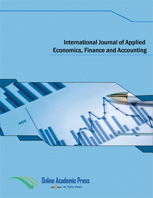Tax policies for high-tech companies and tax avoidance in China
DOI:
https://doi.org/10.33094/ijaefa.v16i2.986Keywords:
Differential taxation, High-tech company certification, Corporate tax cut, High-tech, Tax avoidance.Abstract
The New Enterprise Income Tax Act was passed by the Chinese government in 2008, which reduced the tax rate from 33% to 25% and applied a tax rate of 15% to high-tech businesses as a preferential tax policy. This shows that high-tech businesses are taxed differently from other businesses. The study aims to analyse how the Chinese government's ownership affects the tax avoidance of high-tech enterprises. The analysis's findings are listed below. First off, high-tech corporations engaged in more tax avoidance than other businesses did before to the 2008 tax rate cut. This means that high-tech companies, with large effect of the tax rate cut, have more incentives to minimize their tax burden in the year immediately preceding the tax rate cut compared to general companies. Second, the higher the Chinese government's ownership ratio, the lower the level of tax avoidance. Third, the higher the ownership is, the higher the tax avoidance behaviour becomes in the year just before the tax rate cut. This study provides policy implications pertaining to the tax avoidance behaviour of companies in the case of tax rate cuts and experimental situations in which a differential tax exists.
Downloads
Published
Issue
Section

This work is licensed under a Creative Commons Attribution-NonCommercial 4.0 International License.




